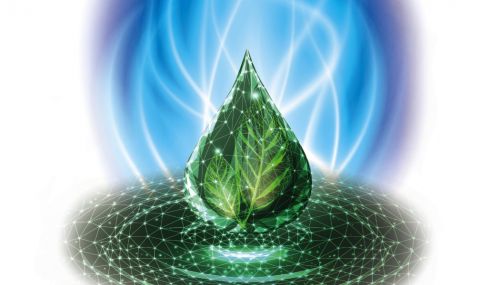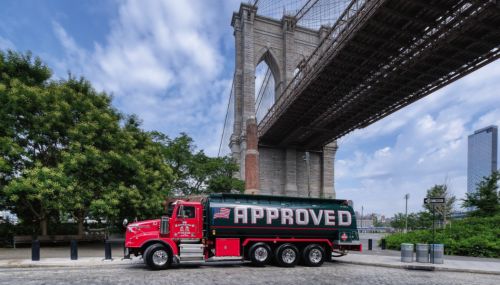All
NEFI Provides Membership Guidance on Home Energy Incentives in the IRA
by Jim Collura, National Energy & Fuels Institute

Your questions on new tax credits and rebates answered!
The National Energy & Fuels Institute (NEFI) has produced a detailed “Frequently Asked Questions” guidance document for its members. This document has been distributed to NEFI members and will be updated as federal guidance on tax rebates is written and the IRS refines the tax credit process.
Oil & Energy Magazine has been authorized to provide the following excerpts from the Membership Guidance document. For the full document, contact NEFI at (617) 924-1000.
On August 16, 2022, President Joe Biden signed the Inflation Reduction Act (IRA) into law. The IRA includes $391 billion worth of energy and climate-related provisions, most of which are designed to incentivize nearly all sectors of the U.S. economy to transition to “cleaner” fuels and technologies and higher levels of energy efficiency. This includes tax incentives and rebate programs to encourage home energy retrofits and the installation of more efficient heating and cooling systems and all-electric appliances. The tax credits are available now. However, the rebates are unavailable until details are fully defined and put in place.
The “Home Energy Incentives Under the Inflation Reduction Act; NEFI Membership Guidance” answers frequently asked questions regarding the IRA’s home energy incentives and their implications for NEFI members and their consumers.i It may be updated as additional questions arise or clarifications are made during the law’s implementation and re-distributed to members. Note that many of the IRA’s policies are authorized over ten years and some may be corrected, modified, or even repealed by Congress during this time.
Disclaimers: This FAQ is not intended as tax or legal guidance. As always, we urge you consult to with a qualified professional on how this law impacts your business. The IRA is a partisan law passed by Democrats and without any support from Republicans. NEFI is a non-partisan organization. By publishing this document, we do not intend to imply that either NEFI or its members support the IRA or any of its policies, unless otherwise stated.
1. Energy Efficient Home Improvement Tax Credit
Q1. What is the energy efficient home improvement tax credit?
The IRA substantially modifies and expands the residential energy efficiency tax credit under Section 25C of the Internal Revenue Code and extends it for ten years.
Q2. How much is the tax credit worth?
The credit is valued at 30% (subject to certain limits) of the cost of installation of qualified residential energy property. The total amount of credit may not exceed an overall limit of $1,200.
Q3. What specific energy efficiency improvements qualify?
The modified and expanded 25C credit offers a “menu” of choices for the homeowner, each with their own minimum efficiencies and individual credit limits. The Member Resource Guide details the property or improvement, maximum incentive amount, and efficiency and other requirements.
Q4. Who establishes minimum efficiency requirements for qualified appliances?
Congress has tasked the Consortium for Energy Efficiency (CEE) with determining eligibility of HVAC appliances other than oil-fired furnaces and boilers and wood stoves.
Q5. How does an Oilheat system qualify for the tax credit?
An Oilheat furnace or boiler qualifies if:
- It is installed between January 1, 2023, and December 31, 2026, meets a minimum of 2021 Energy Star® standards and certified for use with fuel containing a minimum of 20% biofuel.
- It is installed between January 1, 2027 and December 31, 2032, meets a minimum of 90 AFUE and certified for use with fuel containing a minimum of 50% biofuel.
The total amount of the 25C credit taken by a homeowner for the installation of
a qualified Oilheat system must not exceed $600.
Q8. What types of homes qualify?
The home must be located within the United States and personally used as a residence by the taxpayer.
Please reference the full “Home Energy Incentives Under the Inflation Reduction Act; NEFI Membership Guidance” for additional FAQs, expanded answers and other important information.
2. Residential Clean Energy Tax Credit
Q20. What is the residential clean energy tax credit?
The IRA substantially modifies and expands the 25D federal tax credit for installation of residential “clean energy” priority and extends it for ten years.
Q21. How much is the tax credit worth?
The credit is valued at 30% for qualifying expenditures. The credit is phased out beginning in 2033 and is eliminated by January 1, 2035.
Q30. How long is the credit available?
The IRA-modified 25D credit is available for qualified property placed into service in a tax year between January 1, 2022, through December 31, 2034.
Please reference the full “Home Energy Incentives Under the Inflation Reduction Act; NEFI Membership Guidance” for additional FAQs, expanded answers and other important information.
3. Home Energy Rebate Programs
Q32. What are the home energy rebates?
The IRA provides $8.8 billion for the creation of state-administered home energy rebate programs. Specifically, these funds are split between two very different incentives (details on each of these rebate programs are provided later in this document):
- $4.3 billion to state governments for the creation of technology-neutral home efficiency rebate programs offering up to $4,000 per home for proven whole-home energy savings. The value is based on percentage (%) of energy savings realized and the rebate amounts are doubled for lower-income homes.
- $4.275 billion to state governments, with an additional $225 million to tribal governments, for the creation of home electrification rebate programs offering up to $14,000 per home for the installation of all-electric appliances.
Q33. When will these rebates be available to consumers?
Late 2023 or sometime in 2024, at the earliest. The U.S. Department of Energy (DOE) must first establish guidance on how states should set up these rebate programs or integrate them into existing programs. NEFI members should refrain from marketing rebates until states have formally set up these programs. In the meantime, we encourage HVAC service companies to actively educate customers regarding the availability of home efficiency tax credits mentioned earlier in this document.
Q34. Will these rebates be available to homeowners retroactively?
That is unlikely, given that states have not yet defined the parameters of their individual rebate programs. We await the release of DOE guidance for additional information.
Q35. How much funding will each state receive?
Once their plans for creating or integrating the electrification rebate programs are approved by the DOE, states will be awarded funds in the form of a grant.
Q37. What happens when states run out of funding?
State rebate programs that run out funds will likely be suspended until additional funds are made available.
Q38. What if a state fails to establish these programs?
The IRA requires any state funds not disbursed by the U.S. Department of Energy to be reallocated to states with established rebate programs within two years.
NOTE: The DOE published a request for information from the public on how these programs should be deployed. Input received before March 2, 2023, will be used to create a guidance document for state agencies.
Please reference the full “Home Energy Incentives Under the Inflation Reduction Act; NEFI Membership Guidance” for additional FAQs, expanded answers and other important information.
3a. Home Efficiency Rebates
Q44. What is the value of the home efficiency rebate?
The value of a home efficiency rebate is based on the proven efficiency savings and household income listed in the table included in “Home Energy Incentives Under the Inflation Reduction Act; NEFI Member Guidance.”
Q45. Do multifamily homes qualify?
Yes, but they are subject to certain restrictions.
Q46. Does the contractor receive a rebate?
Yes, but only for certain homes.
Q47. How is energy savings calculated?
We will not know the details until the federal government publishes program guidelines and the states submit implementation plans.
Q48. Are any fuels or technologies prohibited?
Not currently. The law intends for home efficiency rebates to be fuel- and technology-neutral. That could change during implementation. We will monitor this process closely.
Please reference the full “Home Energy Incentives Under the Inflation Reduction Act; NEFI Membership Guidance” for additional FAQs, expanded answers and other important information.
3b. Home Electrification Rebates
Q49. What is the value of the home electrification rebate?
The value of the rebate depends on the type of Energy Star® certified all-electric appliances installed or related improvements listed in the table included in “Home Energy Incentives Under the Inflation Reduction Act; NEFI Membership Guidance.”
Up to 100% of project costs may be covered for households earning below 80% of local median income (LMI). Note, however, the total rebate amount may not exceed $14,000 irrespective of income.
Q52. For heat pump installations, does it require the existing system be removed?
The IRA does not appear to require that the existing system be removed when heat pumps are installed. It remains to be seen if this will remain the case in forthcoming U.S. Department of Energy guidance or individual state implementation plans.
More Information Is Available to NEFI Members
The “Home Energy Incentives Under the Inflation Reduction Act; NEFI Membership Guidance” offers additional information on the tax credits and rebates as well as easy to follow charts, and provides answers to these questions, and many others:
- Does the IRA require an Oilheat customer to use biofuel blends to qualify?
- Are labor costs included?
- Are biomass heating systems eligible?
- What kinds of homes qualify?
- What are the requirements for each type of eligible technology?
- Who receives the tax credit or rebate?
- Is there an income requirement?
- How does the taxpayer apply for the credit?
- Can a taxpayer apply for the credit more than once?
- What documentation is needed for the taxpayer’s records?
- How long is the credit available?
- Can the incentive be combined with other tax credits and rebate programs?
- What is required to receive a home energy audit?
- Can you provide an example of a qualified project?
- Can states use these funds for marketing or education?
- Can a consumer apply for both rebates?
- When does the homeowner receive the rebate?
- Who issues the rebate?
- Where can I find additional information about the 25C credit?
NEFI dues-paying members should have received a downloadable version of the full “Home Energy Incentives Under the Inflation Reduction Act; NEFI Membership Guidance” via email. If you did not receive the document or are a non-member interested in obtaining a copy, call (617) 924-1000 or email nefi@nefi.com. The “Home Energy Incentives Under the Inflation Reduction Act; NEFI Membership Guidance” is provided at no charge to NEFI members.
Note: Federal Rules on IRA rebate incentives are still being written for state implementation. The IRS tax credit guidance is out, but likely will be refined in the future. As these changes are made, NEFI will update the Member Guidance document and alert its members.
i Information in this FAQ is taken directly from the Inflation Reduction Act (Pub.L.117-169) or guidance documents published by relevant agencies. Relevant links can be found throughout the document.
Related Posts
 From Blue Flame to Biofuels
From Blue Flame to Biofuels
Posted on June 25, 2025
 HEAT Show Announces Fenway Park Backyard BBQ
HEAT Show Announces Fenway Park Backyard BBQ
Posted on May 15, 2025
 Delivering New York City’s Clean Energy Solutions
Delivering New York City’s Clean Energy Solutions
Posted on May 14, 2025
 Are You a Leader or a Boss? The Choice is Yours
Are You a Leader or a Boss? The Choice is Yours
Posted on May 14, 2025
Enter your email to receive important news and article updates.
